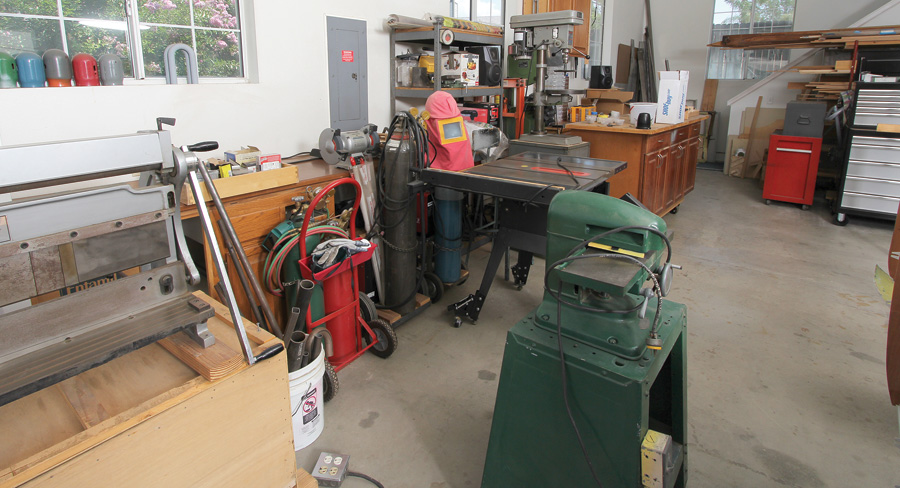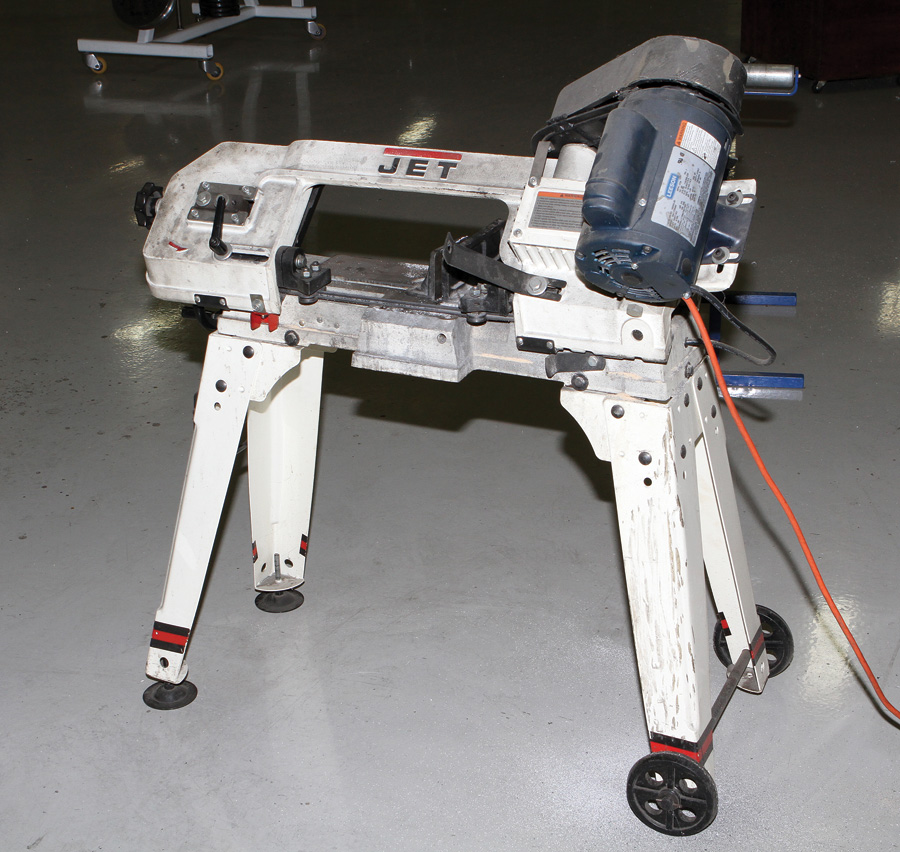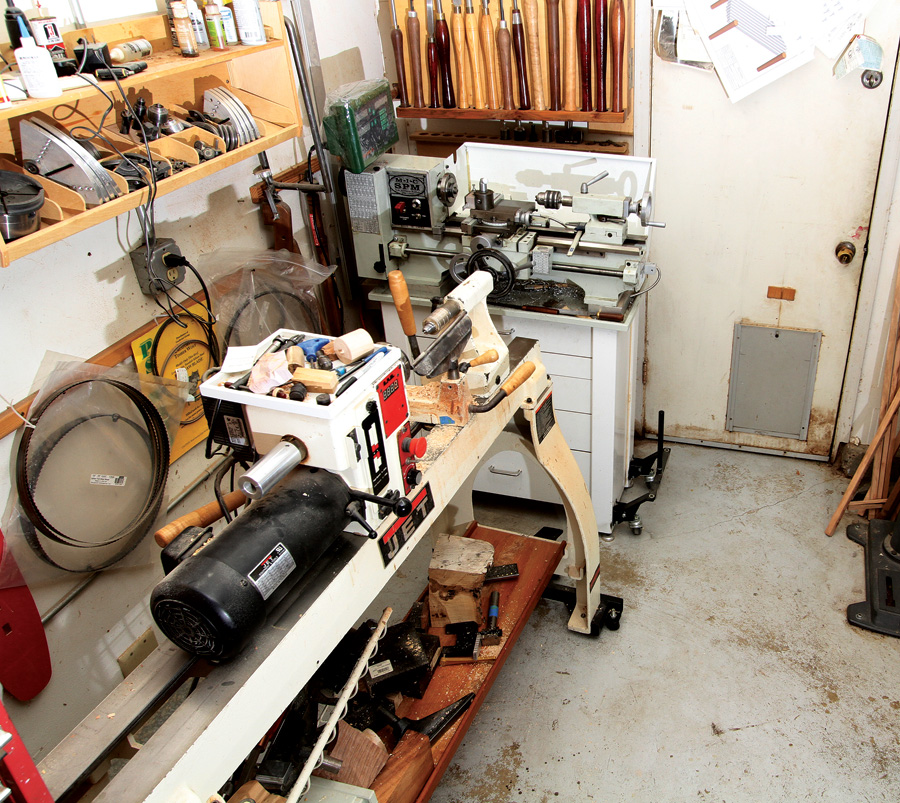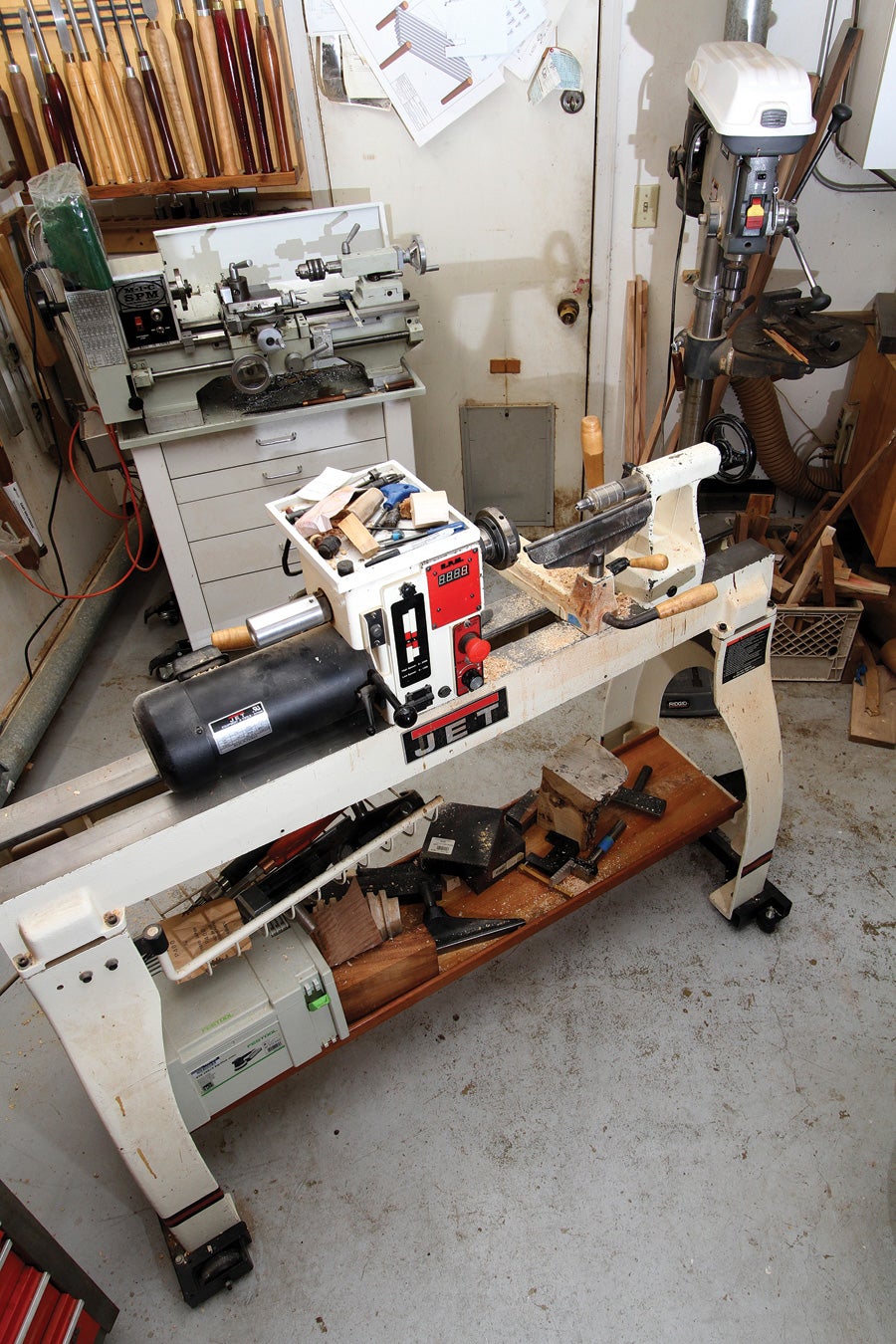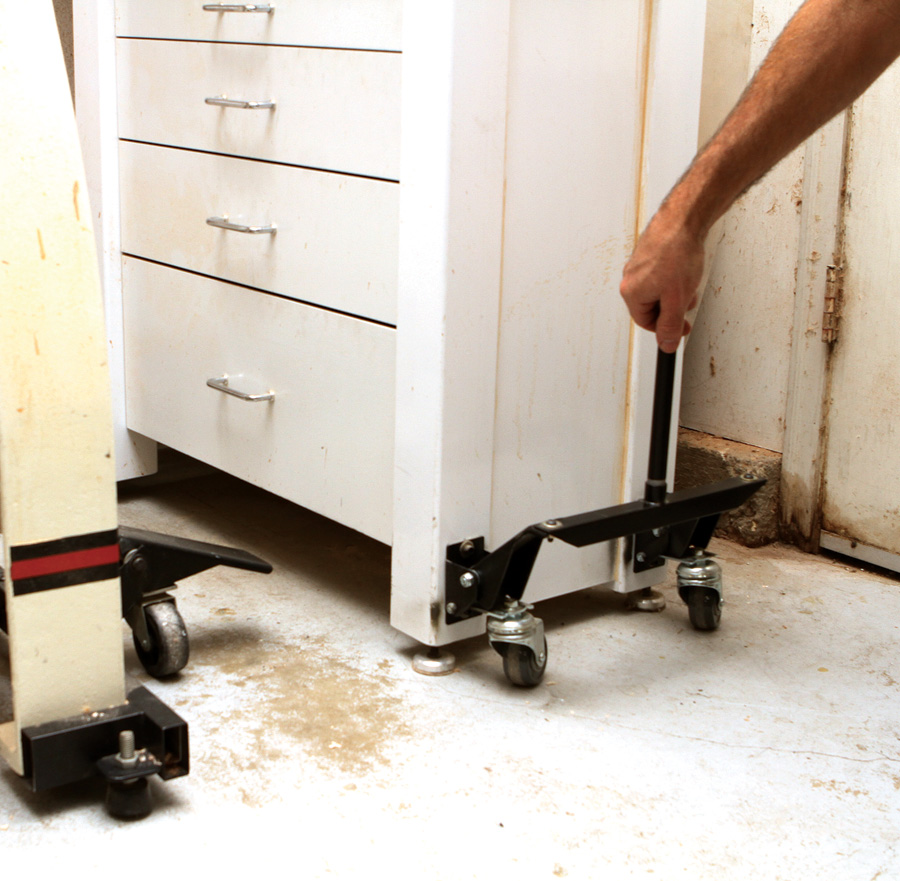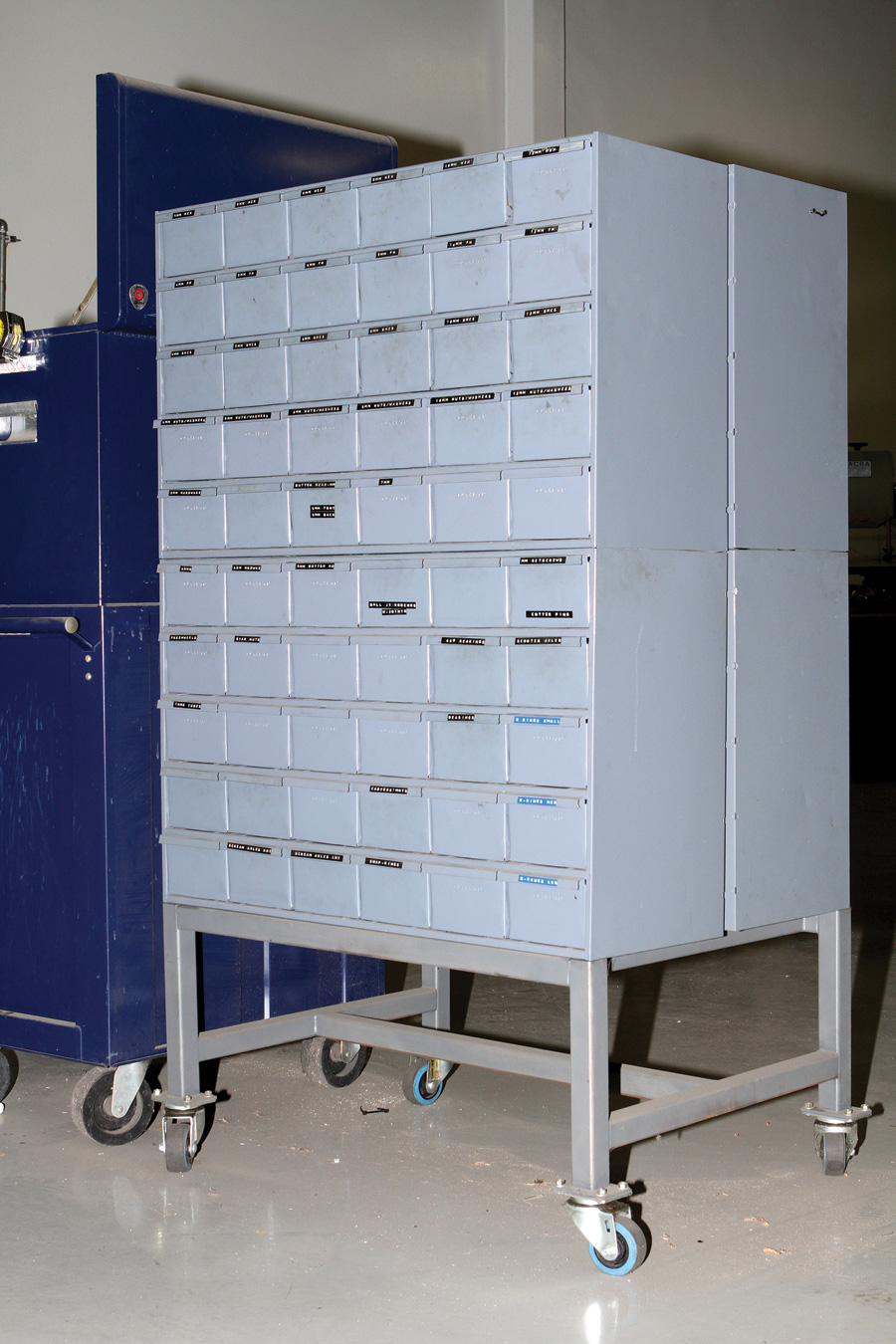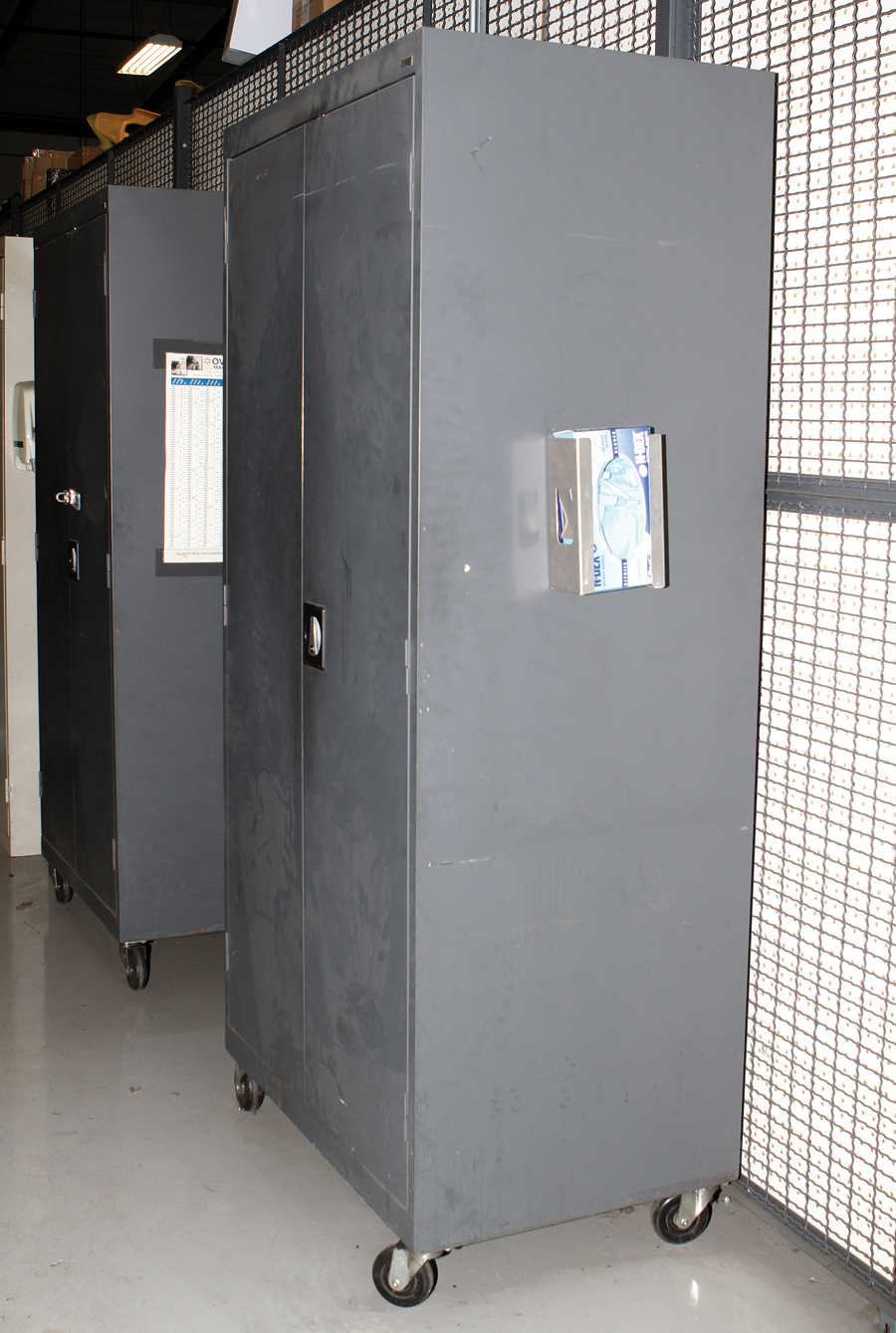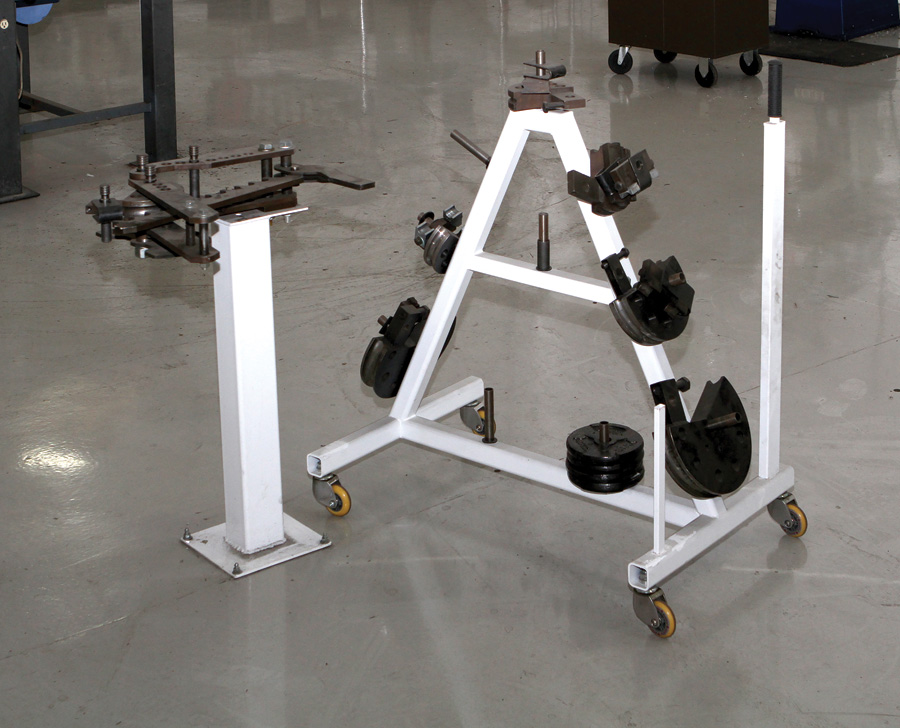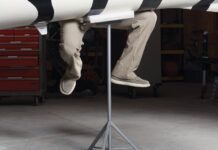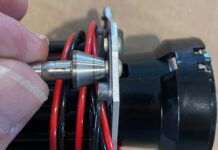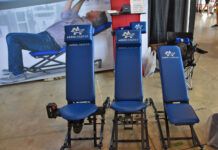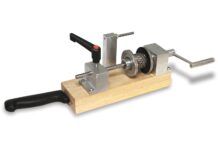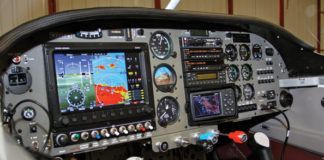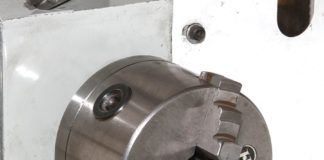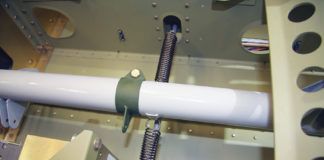Rich Seifert next to his Shopsmith Mark V combo machine. Factory wheels make the Mark V easy to maneuver.
I’ve yet to meet someone who didn’t need more shop space. Call it the space-time conundrum, which is a situation summed up by my buddy, Captain Obvious: “The closer you are to done, the more space it takes.”
Everything in Rich’s shop, from the sheet metal machine (a combo box brake and slip roll) to the welding rigs and woodworking machines, is rigged with wheels.
Building a kit (including fast-build versions) in a typical home (as in garage) shop requires careful space consideration not only for the airplane, but for the tools you may need. Think an air compressor, a drill press, a bench or two (or three), one or more grinders, or a disc sander. You’ll probably need a saw of some type, like a band saw or a table saw. Maybe both! If you’re a regular reader of this column, you know that a benchtop lathe and milling machine can open up a world of possibilities. Although I am a firm believer in “You can never have too many tools,” I’m also a realist. One must have room to work.
I’ve seen and read about a number of clever solutions. More than one airplane has been assembled in a living room. I’m sure, among other things, that option requires a sympathetic spouse. My neighbor, Phil Hopper, is building a Velocity RG in his garage. This may seem impossible, but with some creative “adjustments” to the structure, he’s created a doable workspace. Yes, the wings are on and yes, they will have to be removed to extract the plane from its lair, but overall it’s a manageable workspace.
One of the best ways to optimize a tight workspace is to put as much stuff on wheels as possible. Early in my tenure as the Home Shop Machinist writer for KITPLANES, I wrote about my visit to the shop of Fairchild restorer Rich Seifert (see “Garage Shop on Steroids,” February 2014). Rich has his stationary floor-standing power tools on wheels and neatly stored around the perimeter of the shop. To use a particular machine, he simply rolls it to a clear space, locks the wheels, and goes to work.
Jet’s 4 x 6 horizontal/vertical metal saw is easy to move around thanks to the built-in wheels and handle.
Just about any machine under 500 pounds with a base cabinet or four legs can be fitted with some type of “machine mobile base.” These can be purchased from a variety of suppliers (Amazon, Rockler, etc.), and they typically cost between $50 and $200, depending on the size and weight of the machine you want to mobilize. When shopping for a new machine, consider ones with mobile bases included or as a factory option. Rich’s Craftsman table saw and Shopsmith Mark V multi-function tool came from the factory with casters. One of the most popular band saws for the home shop is the Jet 4×6 horizontal/vertical metal saw. It can be moved around using the included handle and built-in wheels.
Bird’s-eye view of the corner of my garage. Note the end of the wood lathe butts right up against the metal lathe.
Some large band saws come with dolly wheels at one end and a hitch receiver for a wheeled jack handle at the other (see Laguna Tools Mobility Kit, Model AB00002). This type of arrangement is called a semi-skid dolly. The wheeled jack handle is used to lever up the “skid” end of the machine. This allows you roll it around. Picture an F1 car during a pit stop, and you’ll get the idea.
Aftermarket mobility base kits generally have two fixed wheels at one end and one or two swivel casters attached to a riser mechanism at the other. The mechanism can be either a screw or a cam system to raise or lower the caster(s).
Detail of the caster kit that I modified to work on the metal lathe. I added the crossbar and handle to raise and lower the wheels in tandem.
The handle extension fits into a socket on the crossbar and is normally removed. The other side has the exact same arrangement.
On some machines, like a lightweight contractor’s table saw or a top-heavy planer, for example, the fixed wheels are positioned perpendicular to the infeed/outfeed direction. This prevents the machine from scooting around while making parts. This is less of a problem on heavy machines.
My garage shop is a good example of a small workspace that is maxed out in terms of space and machines. In one corner I have a wood lathe and a small metal lathe. To use the metal lathe, I must first move the wood lathe out of the way. Both machines are on mobile base kits that I modified. The metal lathe has casters and cam mechanisms at both ends. This makes it possible to maneuver it 360 degrees and to lower and lock both ends.
I stacked four 30-drawer storage units, two each side, back-to-back, on this welded steel frame to create a mobile hardware cart. With a total of 120 drawers, and up to six dividers per drawer, there are a lot of bins for all kinds of hardware.
The purpose for putting these light-duty storage lockers on casters was to make it easier to sweep the floor.
Cabinets and storage organizers can be mobilized as well. Often it’s as simple as welding up a suitable frame to provide a way to mount standard industrial casters. An added bonus to having equipment like cabinets, bins, and benches mobile is it makes sweeping the floor a lot easier.
Some things can’t be mobile, but that doesn’t mean you can’t make the most of it. Manual-style benders must to be solidly anchored and, if you’re bending 10-foot tubes, they need clear space all around. But by putting the collection of bending dies on a rolling cart, it not only declutters the area, it saves having to carrying those heavy components across the shop.



